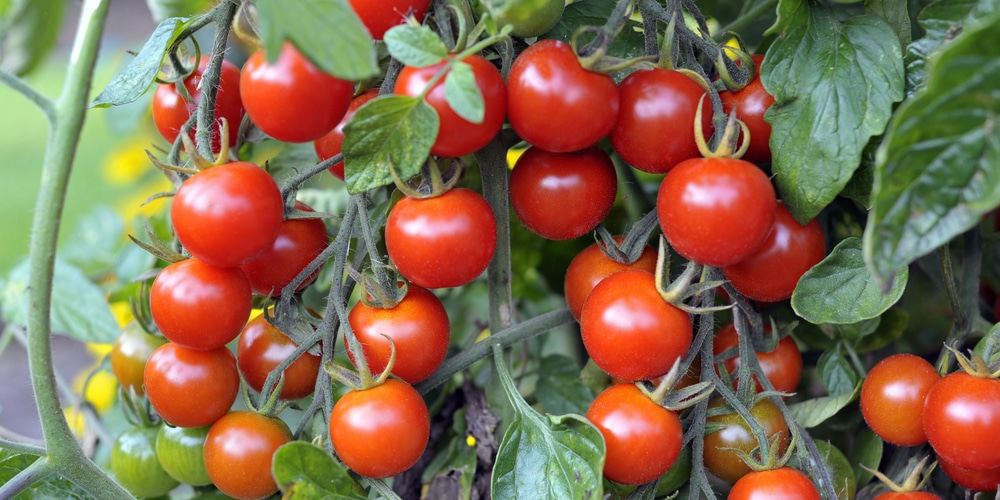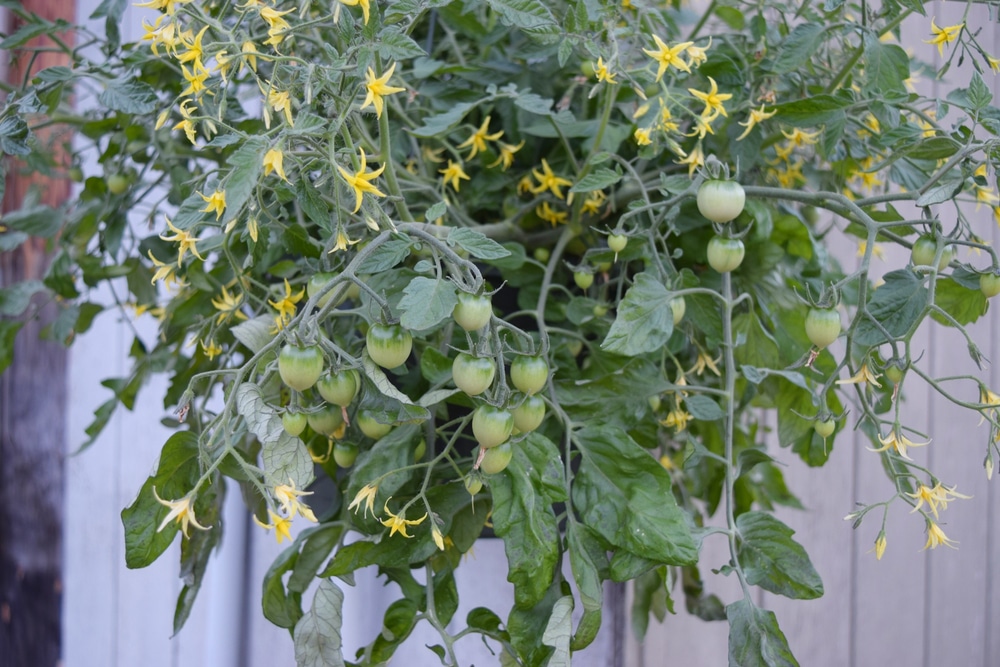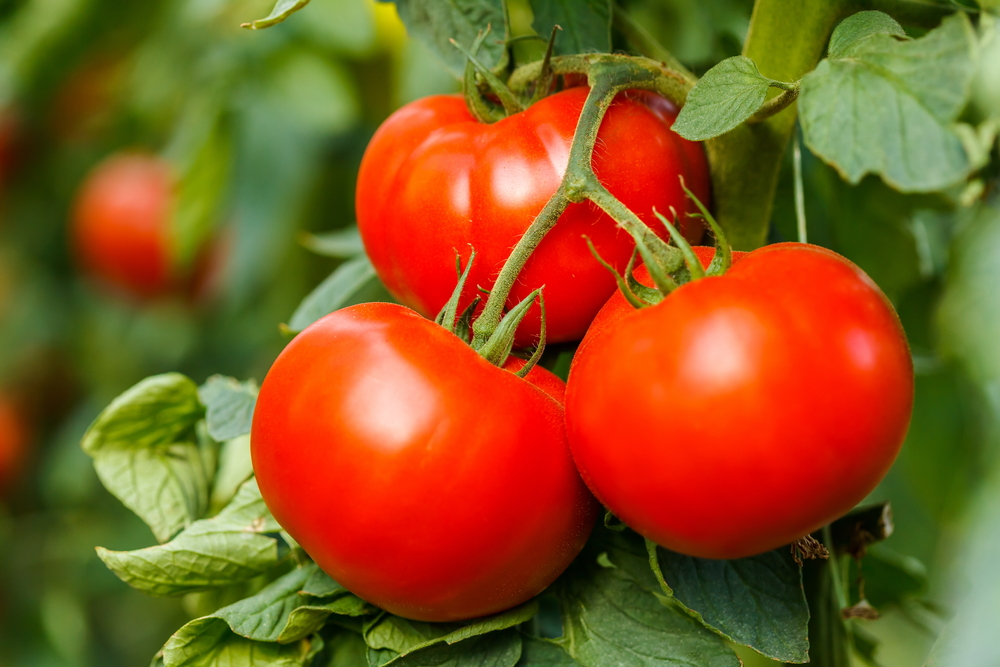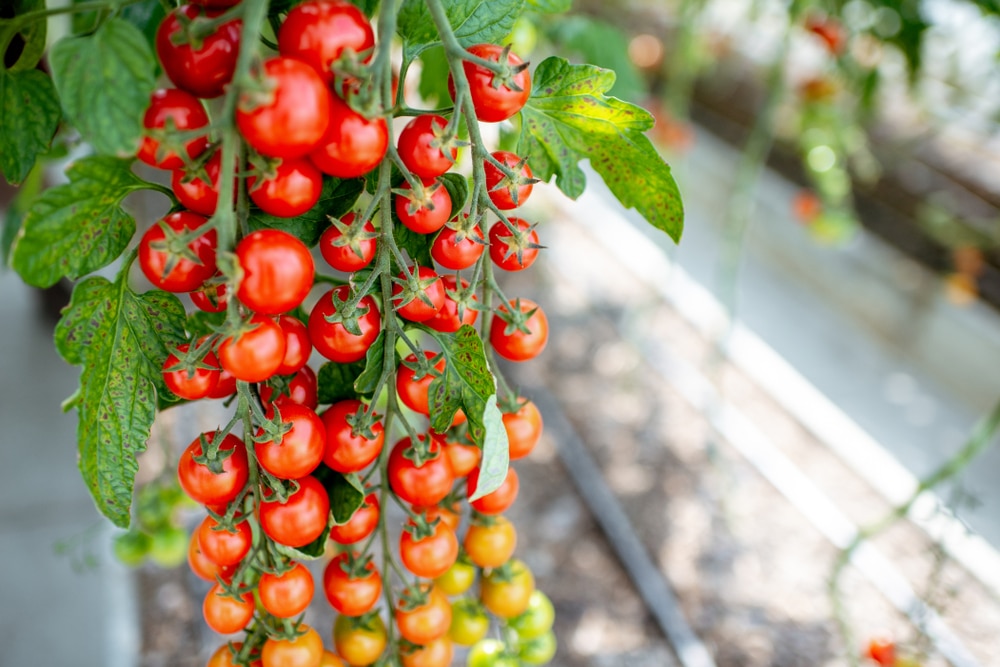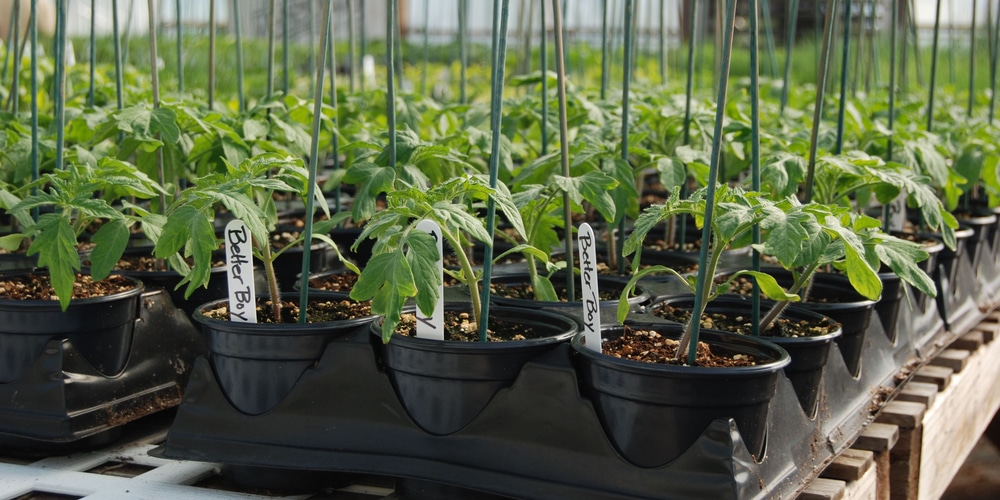| Question | What’s the best time of year to plant tomatoes in California? |
|---|---|
| Answer | Varies significantly across the state. |
| More Info |
|
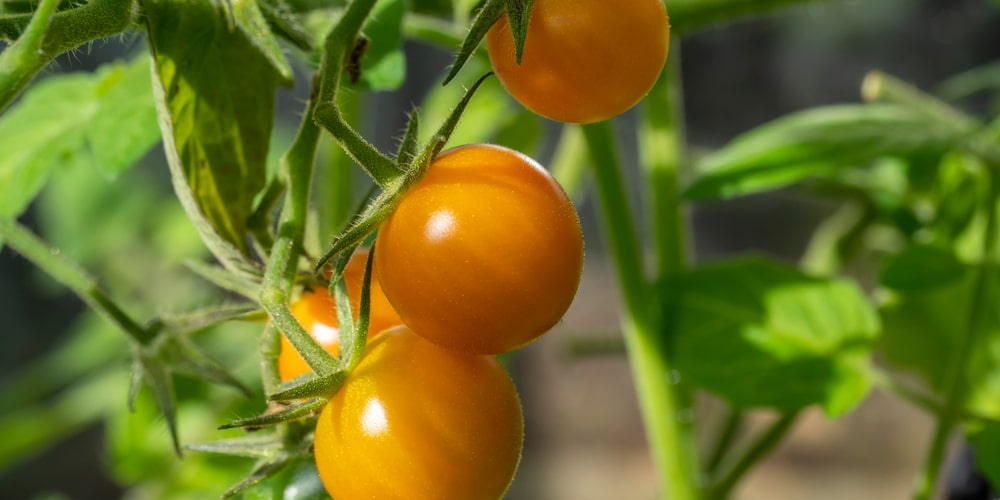
Due to California’s vast size and diverse climate, the best time to plant tomatoes varies significantly across the state.
Thanks to the mild weather, tomatoes can often be planted as early as February or March in coastal regions. Inland areas, which experience colder winters, may need to wait until April or even May.
For Southern California’s warmer climates, planting might start in late January to early February. Gardeners should start seeds indoors about 6-8 weeks prior to their region’s last expected frost date.
Planting in late summer to early fall is also an option for a fall harvest, especially in areas with hot summers. In California, consulting local extension services is crucial to getting region-specific planting advice.
Tomato planting in California varies greatly depending on the climate zone, soil preparation, and tomato variety chosen.
With a state as geographically diverse as California, gardeners can benefit from understanding the regional differences in planting times.
In the warm, southern coastal areas, planting can occur as early as late winter or early spring, while cooler regions require waiting until the risk of frost has passed and soil temperatures have adequately warmed.
Knowing the local last frost date is crucial for timing the planting to ensure that seedlings are not exposed to damaging cold.
Which Tomato Varieties do Well in CA?
In California, gardeners have the luxury of a variety of tomatoes that can thrive in the state’s diverse climate zones. The selection can accommodate anyone’s preference, whether it be for cherry tomatoes, heirlooms, or robust beefsteak varieties.
Northern California is suited to tomatoes that can tolerate cooler night temperatures.
Heirloom varieties such as Brandywine and San Marzano are popular for their rich flavor and perform well in this part of the state.
Central California’s warmer climates are ideal for a broader range of tomatoes.
One of the favorites is the Sun Gold, a cherry tomato variety known for its sweetness and vigorous growth.
Another prolific choice suitable for this region is the Sweet 100, cherished for its exceptional sweetness and high yield.
Moving to Southern California, where the conditions are often hotter and drier, tomatoes that can endure and produce through intense heat are essential.
The Green Zebra, with its striking green stripes and tangy taste, is a noteworthy variety that favors this warm climate.
Additionally, gardeners in Southern California have had success with varieties like Celebrity and Early Girl, which are praised for their ability to set fruit even in high temperatures.
Each variety has its own set of requirements, but they all share common needs such as full sun exposure and well-draining soil.
By matching the tomato variety to the specific climate zone within California, gardeners can optimize their chances for a plentiful and tasty harvest.
California’s Huge. Here’s the Last Frost Date By Climate Zone
California spans a diverse range of climate zones, affecting the last frost dates which are critical for gardeners when considering planting tomatoes. Below is a guide that details last frost dates by zone in California to help ensure your tomato planting is timed perfectly.
Northern California
Coastal regions can expect the last frost dates to occur from early to mid-March. Moving inland, gardeners have a wider window:
- Coastal Areas: Early March
- Inland Areas: Up to Late April
Central California
In this transitional area, last frost dates can vary significantly:
- Coastal Areas: Rare frosts, typically no later than early February
- Central Valley: Mid to Late March
Southern California
With a warmer climate, Southern California has some of the earliest last frost dates:
- Coastal Areas: Frost is rare, but caution is advised until late January
- Inland and Desert Areas: Early to mid-February
Table of Last Frost Dates By Major Climate Zones
| Zone | Average Last Frost Date |
|---|---|
| Coastal Northern CA | March 1 – 15 |
| Inland Northern CA | March 15 – April 30 |
| Coastal Central CA | Rare; generally before February 1 |
| Central Valley | March 15 – 31 |
| Coastal Southern CA | Rare; generally before January 31 |
| Inland & Desert Southern CA | February 1 – 15 |
These dates give an overview, but local microclimates can cause variations. Gardeners should observe their own garden’s conditions and consult local weather resources or extension services for the most accurate information.
Timing your tomato planting around these last frost dates will help maximize your chances for a successful and bountiful harvest.
When to Plant
In California, the optimal tomato planting times are largely influenced by regional climate variations. Gardeners must take into account the area’s specific temperature and weather patterns.
- Northern California: Planting is generally recommended after the last frost date, which typically occurs around late April to early May.
- Central California: The region often supports year-round tomato growth, but planting in late winter or early spring is ideal for a successful early summer harvest.
- Southern California: This area permits earlier planting, sometimes as soon as January with frost protection, or more reliably in March after the threat of frost has passed.
For a tailored tomato planting schedule, one should note the USDA plant hardiness zones:
| Zone | Suggested Planting Time |
|---|---|
| 5-7 | Late April – Early June |
| 8-9 | February – March |
| 10 | January – March |
Gardeners should wait until soil temperatures have reached at least 65°F. This is usually a sign that the environmental conditions are suitable for tomato seedlings to thrive.
Furthermore, it’s prudent to follow local frost dates and consider microclimates within one’s garden to achieve the best results.
Success is in the Soil
When planting tomatoes in California, soil condition is a quintessential factor for a gardener’s success.
The soil temperature should be a prime consideration, ideally around 65 degrees Fahrenheit before sowing seeds or transplanting seedlings.
Soil Composition:
- It should be light and well-draining
- pH levels between 6.0 and 7.5 are ideal
- Organic matter, such as compost, can greatly improve soil quality
Gardeners should not overlook the value of soil testing.
This can provide vital information regarding nutrient levels and pH balance, allowing for adjustments before planting.
Soil Preparation Tips:
- Incorporate compost or well-rotted manure to enhance fertility
- Ensure adequate drainage to prevent root diseases
- Make beds or rows to improve root development and ease of access
For those planting in the Central Valley where year-round cultivation is possible, maintaining soil health through the seasons is vital.
Regular addition of organic matter and crop rotation can help maintain a robust soil structure and prevent nutrient depletion.
One should remember that soil is not just a medium to hold plants but a living ecosystem teeming with organisms that support plant health.
Emphasizing soil health can lead to vibrant tomato plants with higher yields and better resilience against pests and diseases.
Keeping Them Alive
Sustaining the health of tomato plants in California’s diverse climate requires attention to watering, soil quality, and disease management.
Watering:
Tomatoes need a consistent amount of water, making drip irrigation a preferred method. It delivers water directly to the roots, reducing evaporation and minimizing leaf wetness that can lead to disease.
One should provide 1-2 inches of water per week, adjusting for rain and temperature.
Soil Quality:
- Well-draining soil prevents waterlogging, which can cause root rot.
- Mulching helps retain moisture and controls soil temperature.
- Regular feeding with balanced fertilizers supports growth, particularly when plants are flowering and fruiting.
Disease Management:
- Rotation of planting locations every year helps prevent soil-borne diseases.
- Pruning lower leaves keeps them off the ground, reducing risk of fungal infections.
- Staking or caging improves air circulation and keeps the fruit clean.
Tomato plant varieties are bred with disease resistance in mind, so gardeners should choose varieties that are tailored to resist common issues in their region.
Monitoring for pests and treating with appropriate methods when necessary is essential to keep plants alive and fruitful.
Lastly, gardeners must be vigilant about the signs of stress, such as wilting leaves or discolored fruit, and respond swiftly.
Frequently Asked Questions
Gardeners often inquire about the specifics of planting tomatoes in California due to the state’s various microclimates.
The following are precise answers to common queries regarding the planting and care of tomatoes.
When is the optimal planting time for tomatoes in Northern California?
In Northern California, gardeners should wait until the danger of frost has passed, which is typically by mid-April or May, before planting tomatoes outdoors.
What is the ideal month to start tomato seeds in Southern California?
For Southern California, starting tomato seeds indoors is best done from January to March. This ensures they are ready for transplant after the last frost between March and April.
Can tomato plants be grown throughout the year in California, especially in the southern region?
Tomato plants are not perennial in California; they grow best in warm weather. However, in Southern California’s milder climate, they can sometimes survive multiple seasons if not exposed to frost.
In what month should one typically plant tomatoes in the Los Angeles area?
Los Angeles gardeners typically plant tomatoes from March to April, after the last frost date, to take advantage of the longer growing season.
How often should tomato plants be watered in the Californian climate?
Tomato plants in California should be watered 1-2 inches per week, depending on the local climate. Increased frequency is needed in hotter, drier areas, while cooler, coastal regions require reduced watering.
Do tomatoes thrive well in the varied climates of California?
Tomatoes can be successful in California’s diverse climates as long as gardeners choose appropriate varieties for their specific regional conditions and plant at the recommended times.
Last update on 2025-04-19 / Affiliate links / Images from Amazon Product Advertising API



